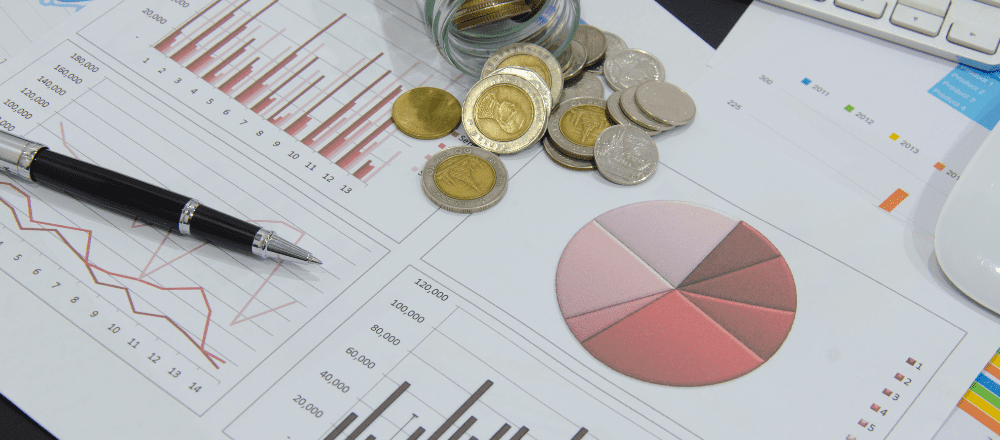Introduction
Following a year of remarkable performance in global equity markets, the significance of geographic diversity and a heightened focus on dividend-paying stocks is becoming increasingly apparent. While the “Magnificent 7” dominated U.S. index returns in 2023, recent volatility and divergent performance in these names serve as a cautionary signal for U.S. markets.
Why Invest in Dividend Stocks?
Dividend stocks offer investors a consistent cash payout, typically on a quarterly basis in the U.S., although frequency varies by company and tends to be semi-annual or annual for international firms. The proportion of a company’s earnings paid to shareholders as dividends, known as the payout ratio, is determined by its board of directors.
Consistently paying dividends and a history of consistent increases are indicative of a financially healthy entity, although thorough evaluation of financial fundamentals is necessary. Dividend-paying stocks can mitigate portfolio volatility and enhance overall returns. In low inflation environments before 2022, dividend stocks often lagged behind growth stocks, particularly in the technology sector. However, many large capitalization growth stocks, including tech companies, now also pay dividends. During periods of declining stock prices, dividends can counterbalance share price declines.
In inflationary environments, stocks with increasing dividend payouts, aiming to offset inflationary pressures, typically outperform those retaining earnings. According to an April 11, 2024 article by Fidelity, dividends have contributed to 40% of stock market returns since 1930 and 54% during high inflation decades. Given the current inflationary environment, dividend-paying stocks are increasingly attractive. Global equities often pay dividends and, when combined with their low correlation to U.S. markets, offer substantial diversification benefits to investors.
Criteria for Selecting Dividend Stocks
Selection of any stock always begins with fundamental analysis.
Income Statement and Cash Flow
- Stable revenue and earnings growth: Ideally, growth in both revenue and earnings is consistent and stable. Significant variability year over year is a cautionary flag.
- Cash flow adequacy: Current accounting methods reduce earnings with non-cash items such as depreciation as an example. Depreciation reflects wear and tear on assets but doesn’t directly affect cash until replacement occurs. Therefore, analysts evaluate cash flow to gauge the actual cash available for business operations and debt obligations. Positive cash flow indicates the ability to meet financial commitments, invest in growth opportunities, and weather economic downturns. Thus, when evaluating investments, understanding a company’s cash flow dynamics is essential for making informed decisions about its financial health and future prospects.
Balance Sheet
- Asset Quality and the effectiveness of asset utilization: Management teams are responsible for maintaining quality assets and there are many indicators that compare a specific company with competitors in the same industry. One example is inventory turnover. Inventory that is unsold for prolonged periods has higher obsolescence risk.
- Debt service: How heavily leveraged is this company? Companies in heavily industrialized industries, for example, can require greater levels of debt. We look at a company’s access to capital markets to continue funding its operations as well as its ability to meet its debt repayment schedule. Evaluating a company’s ability to meet its debt repayment schedule is critical for assessing solvency and liquidity risk. Comparing the relative level of debt to an industry peer group is a useful benchmark.
Dividend Features
- The sustainability of the dividend payout ratio: The payout ratio is defined as the amount of income the company pays per share divided by earnings per share. The lower the payout ratio, the better the chance that the dividend payout will be sustainable over the long term.
- Consistency of payout: a company that has been able to pay a dividend over many years, during recessions and can even raise it during inflationary times is attractive to investors.
- The Dividend yield: The dividend yield is calculated by dividing the annual dividend per share by the current market price of the common share. Investors often mistake a high dividend yield for security.
- A high dividend yield can be a very good thing if the business is strong.
- However, if the company’s fundamentals are poor, and the high yield is due to a low common share price, a high payout may not be sustainable.
- A high dividend yield on a solid company that has experienced a temporary setback could signal an investment opportunity.
Competition
Durable competitive advantages vs. peers: This would include proprietary technology that is in high demand, high customer switching costs that anchor a client to a particular company, a powerful brand name or a high barrier to entry. A high barrier to entry is a factor that prevents newcomers from entering an industry sector or a marketplace such as high startup costs or regulatory hurdles.
One current example of a durable competitive advantage is Boeing. Boeing, as many of you are aware, has experienced a series of safety/mechanical issues. As a result, regulators have increased scrutiny, and the company faces litigation and higher oversight costs to compensate for recent failures. Despite these unfortunate events, Boeing has only one European competitor. Airlines face a multi-year wait for delivery of new plane orders. Cancellation of an order from Boeing and ordering a plane from Airbus would place the order at the back of the line, delaying receipt of the plane by many years and loss of revenue by the airline. This lack of competition provides insulation for Boeing.
Benefits of Investing in Dividend Stocks
For an investor the benefit of a dividend includes a predictable income stream and realization of profit without having to sell the stock. Each dividend payment technically represents a return on invested capital, thereby reducing the investor’s risk with each subsequent dividend payment. Many retirees invest in dividend stocks for the current income provided them.
For a company with a consistent payout, the benefits include an increase in its stock price with each announcement of a dividend payment. Furthermore, companies that have consistent dividend payouts over years and over variable economic cycles develop shareholder loyalty.
Risks and Considerations of Dividend Investing
- A company has no obligation to pay a dividend, and it can choose to cut or eliminate its dividend at any time. For this reason, investors need to be vigilant in monitoring their holdings, or hire an active portfolio manager to supervise relevant events.
- Rising interest rates on government securities, perceived to be risk free, provide an attractive alternative to some dividend stocks. If the company can safely raise its dividend in negative economic environments, the stock will outperform the market. If not, investors selling the stock to buy bonds will result in lower stock prices.
- Dividends can be taxable. The taxation on dividends depends on your income, your filing status and whether the dividend is qualified or non-qualified. A qualified dividend receives preferential tax treatment based on your income and filing status, whereas a non-qualified dividend is taxed at ordinary income rates.
Conclusion
History demonstrates that stock investment protects investors against inflation because stock prices historically rise with consumer prices. However, not all stocks perform equally well when consumer prices are rising. Dividend stocks have historically outperformed in inflationary environments.
Dividend stocks need to be viewed as long-term investments. All stocks, including stable dividend paying stocks, experience market volatility over the short term. Long-term, patient investing has proven to be a consistently successful investment strategy.
Hemispheres Investment Management’s principals have over 35+ years of successfully managing client funds through multiple market cycles and various watershed events. Over time we have developed a proven and repeatable investment process with demonstrated results. Hemispheres Investment Management is a value style, bottom-up manager. This means that our process begins with analysis of individual companies’ financial fundamentals. We diversify client portfolios by individual holding size, by sector, by country, and by region of the world. A global equities portfolio holds both domestic and international securities, but we invest where we see the greatest opportunity in the long term. We are a separate account manager that customizes portfolios for individual and institutional clientele. Hemispheres can assist you develop an asset allocation that is appropriate for your needs and preferences. Please feel free to book a free consultation with us.
[1] https://www.fidelity.com/learning-center/trading-investing/inflation-and-dividend-stocks






